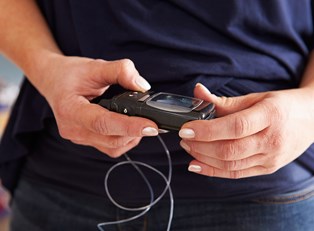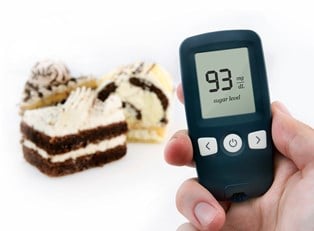High blood sugar also known as hyperglycemia can wreak havoc on the body.
Illness, emotional stress and inactivity increase levels of insulin or blood sugar in the blood. Unregulated blood sugar can damage the pancreas and cause long-term health problems. A steady diet of simple carbohydrates such as fast foods, breads, baked goods, sugary treats and pastas can increase heart rate, blood pressure and weight gain. Long-term, irreversible damage and Diabetes result from prolonged High Blood Sugar levels.
High Blood Sugar Causes
Eating simple carbohydrates such as pasta, breads and fast foods release sugar molecules, with the help of insulin, into the blood stream. These sugar molecules give a person a quick but unsustainable energy. Eating a steady diet of simple carbohydrates causes increases in blood sugar levels when accompanied by inactivity, increases in emotional stress and illness. Foods such as complex carbohydrates, vegetables and legumes, release energy slowly into the blood stream. Burning energy slowly, allows the pancreas and blood stream to adjust and use or store excess energy. Over time, the body is unable to produce the required amount of insulin to maintain even levels of glucose in the blood stream. This condition, hyperglycemia can result in serious illness and death if untreated by medication.
The body produces hormones to manage emotional stress and illness. These hormones cause normal blood sugar level spikes. In a healthy person, however, insulin regulates these spikes. Add inactivity, poor diet, lowered immune responses, illness and excess body fat to the hard working pancreas and the body soon develop hyperglycemia. Health complications resulting from High Blood Sugar Levels include heart, nerve and kidney damage. Additionally, hyperglycemia can cause damage to the retina. Hyperglycemia can also cause bone and joint disorders and fungal infections.
Symptoms and Signs of High Blood Sugar
Healthy blood sugar levels range from 80 to 140 milligrams of glucose per liter of blood. Symptoms of High Blood Sugar and signs of High Blood Sugar do not appear until levels excess 200 milligrams. This insidious illness occurs over time, slowly. Early symptoms, conditions that are difficult for a doctor to measure, include excess urination, thirst, headaches, blurred vision and fatigue. Blood sugar levels consistently at or above 200 mg. Per liter of blood cause serious health problems. Abdominal pain, nausea, muscle weakness, confusion, dry mouth and a fruit-smell to the breath are signs of a toxic build up of glucose in the blood and urine. This life-threatening condition can lead to coma and death if left untreated, according to The Mayo Clinic Online Reference Library.
Since symptoms of High Blood Sugar Levels increase slowly, over time, keep weight at a healthy level and eat healthy foods to lower risks for hyperglycemia. Receiving regular medical check-ups, blood test examinations for fasting blood sugar levels and maintaining stress levels with regular exercise and relaxation can also decrease the risk of hyperglycemia or High Blood Sugar Levels.
High Blood Sugar Treatment
Treatment includes testing and diagnosis with a hemoglobin test called AC1. Treatment may also include measuring blood glucose levels. Blood sugar levels tested on an empty stomach should be between 90 and 130 mg. per liter of blood. Before meals, blood sugar levels should fall between 70 to 130 mg. Several hours after eating a meal blood sugar levels should be lower than 180 mg. to insure that the body is producing sufficient insulin to maintain an individual's blood glucose levels. If blood sugar levels continue to spike with improvements to diet and exercise, a physician may treat the illness with insulin or oral diabetes medications to maintain the body's blood sugar levels.



